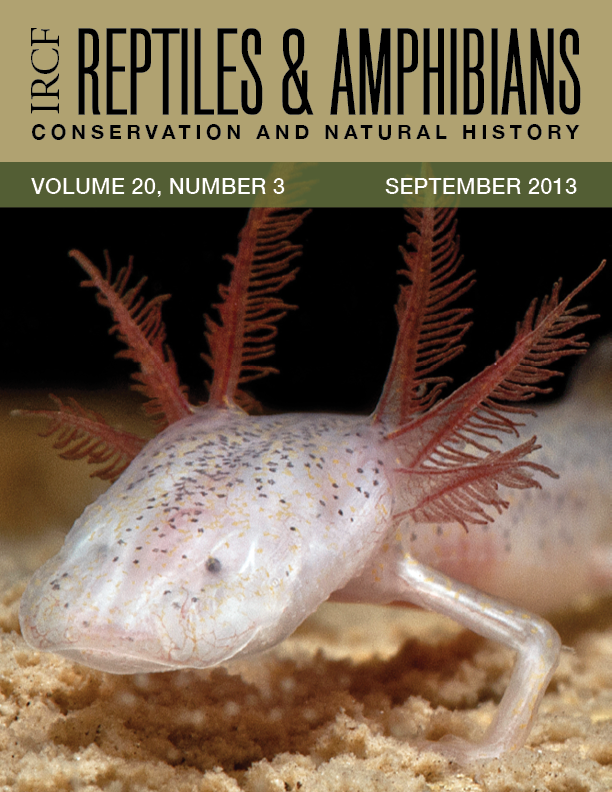Conservation status of the Georgia Blind Salamander (Eurycea wallacei) from the Floridan Aquifer of Florida and Georgia
DOI:
https://doi.org/10.17161/randa.v20i3.13945Keywords:
Eurycea wallacei, Georgia Blind Salamander, Conservation, Threats, Groundwater fauna, Amphibian, Amphibian chytrid fungus, Chytridiomycosis, Batrachochytrium dendrobatidis, Captive breeding program, Cave, Distribution, Floridan Aquifer, Dougherty Plain, Life history, Marianna LowlandsAbstract
The Georgia Blind Salamander (Eurycea wallacei) is a poorly understood stygobitic plethodontid salamander found in the Floridan Aquifer of Florida and Georgia, USA. Its distribution is poorly delimited and little information is available on the ecology and life history of the species. We summarize existing information on the Georgia Blind Salamander and report new findings with regard to distribution, conservation status, and aspects of its ecology and life history from recent surveys in Florida and Georgia, including anecdotal observations made by local cave divers. We also present data on the prevalence of Batrachochytrium dendrobatidis and discuss potential measures and challenges involved in conservation. Georgia Blind Salamanders are known from at least 35 localities within five United States Geological Survey (USGS) HUC8 watersheds in Florida and Georgia, all within the groundwater of the Upper Floridan Aquifer. Some populations may be large, as cave divers have observed >100 salamanders in a single dive at three localities and reported densities up to 10 salamanders per square meter. We confirm through direct observation that the Dougherty Plain Cave Crayfish (Cambarus cryptodytes) is a predator of E. wallacei. Although we found no evidence that any populations of the Georgia Blind Salamander have been infected by amphibian chytrid fungus, clear threats remain and include: (1) An “at risk” ranking by USGS of the Floridian Aquifer for contamination; (2) overharvesting of groundwater; (3) the presence of an emergent infectious amphibian disease in surface amphibians in the region (e.g., amphibian chytrid fun- gus); and (4) a lack of data on the basic biology and ecology of the species. We recommend the following conservation actions: (1) Better regulations and improved methods for retaining pesticide and fertilizer contaminants on the surface; (2) regulatory review of agricultural crops grown in the region and the establishment of systems and crops that do not require center pivot irrigation; (3) regular monitoring for disease across the range of the species; and (4) establishment of multiple assurance colonies such that captive specimens genetically represent at least half of the known populations.
Downloads
Published
Versions
- 2020-12-12 (2)
- 2013-09-01 (1)
Issue
Section
License

This work is licensed under a Creative Commons Attribution-NonCommercial 4.0 International License.
Copyright is held by the authors. Articles in R&A are made available under a Creative Commons Attribution-NonCommercial 4.0 International license.

